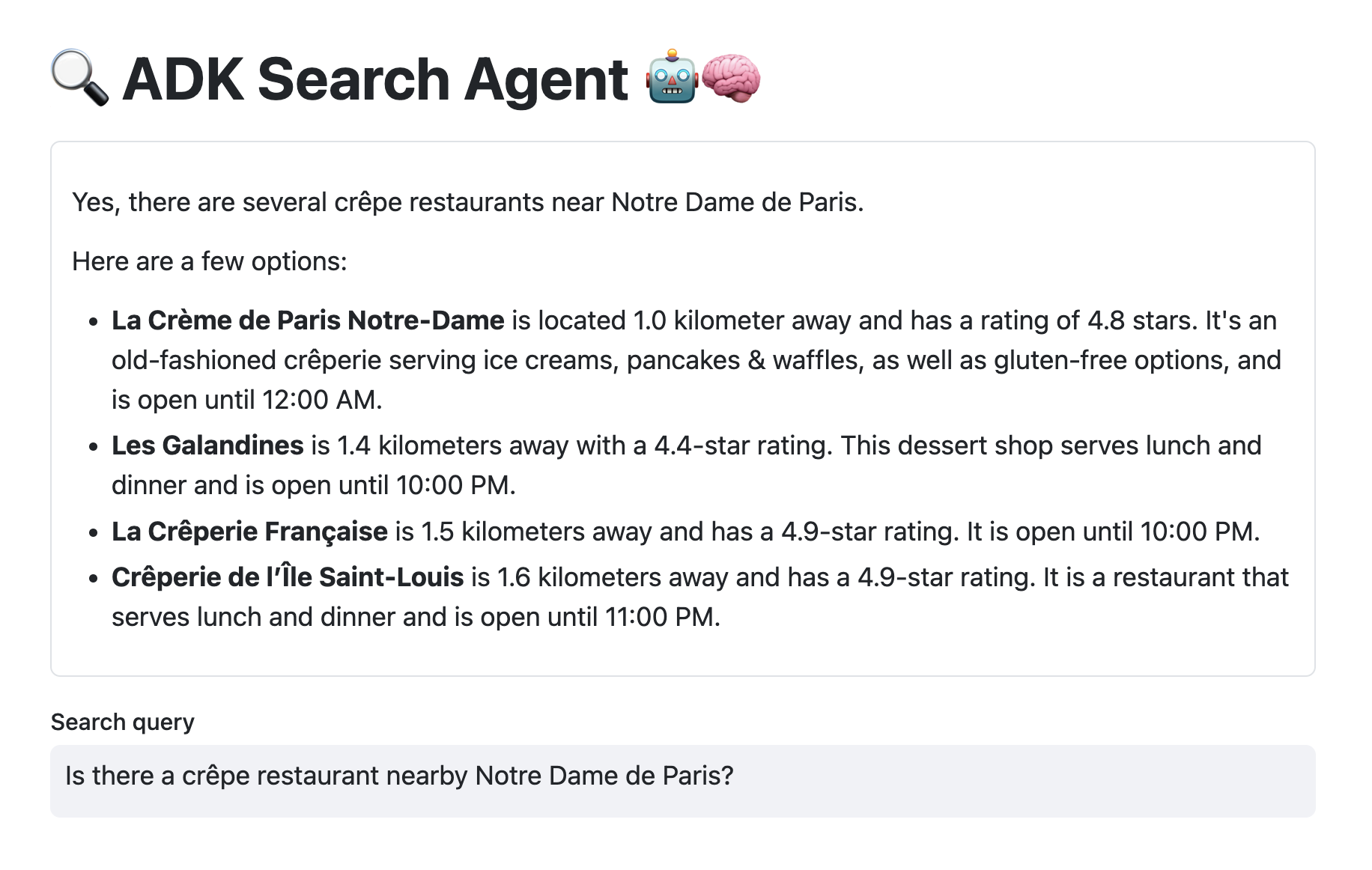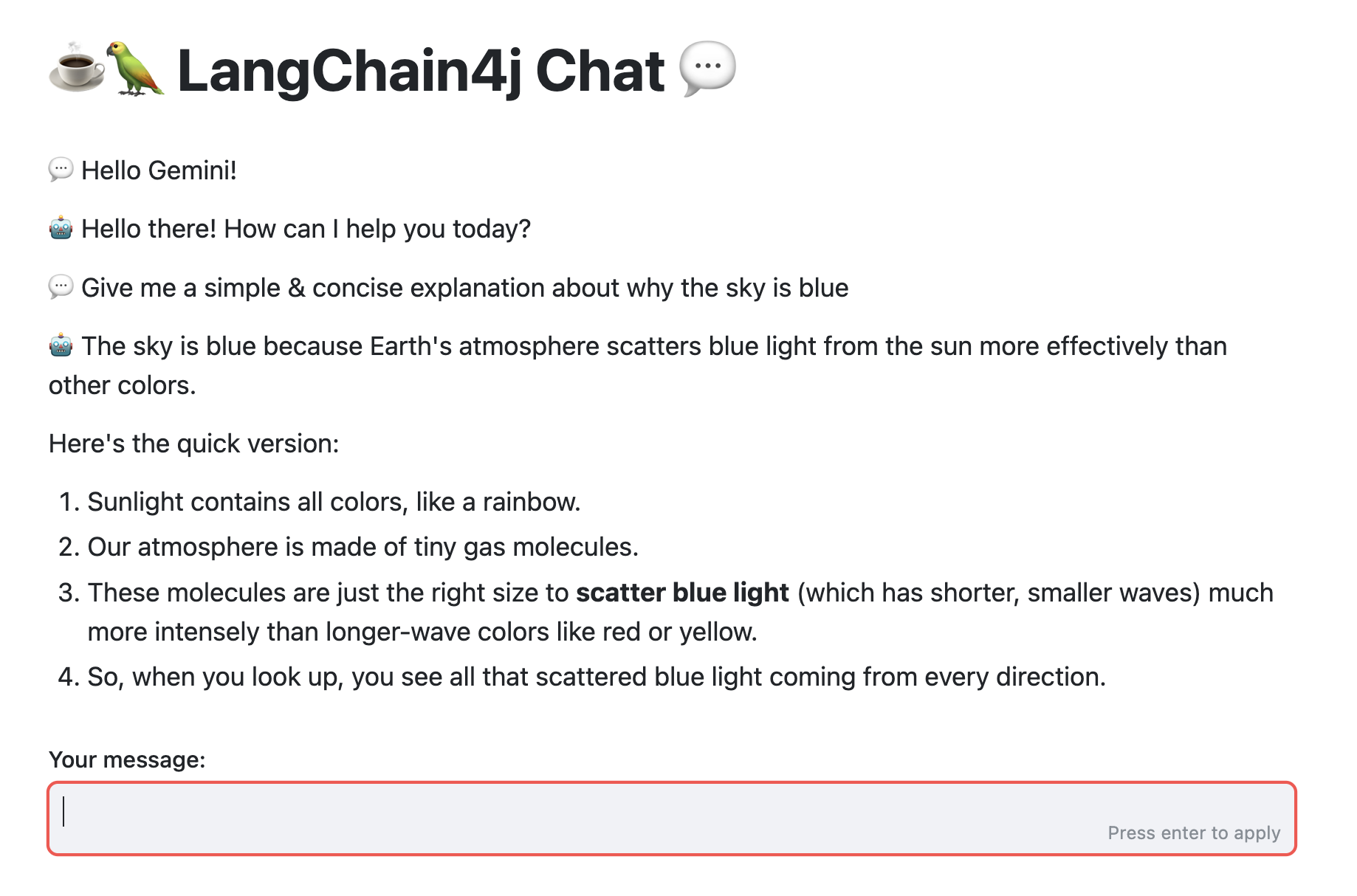A Javelit frontend for an ADK agent
Continuing my journey with Javelit, after creating a frontend for “Nano Banana” to generate images and a chat interface for a LangChain4j-based Gemini chat model, I decided to see how I could integrate an ADK agent with a Javelit frontend.
The Javelit interface for an ADK search agent

The key ingredients of this interface:
- a title (with some emojis 😃)
- a container that displays the agent’s answer
- a text input field to enter the search query
The ADK agent
For the purpose of this article, I built a simple search agent, with a couple of search tools:
Read more...
